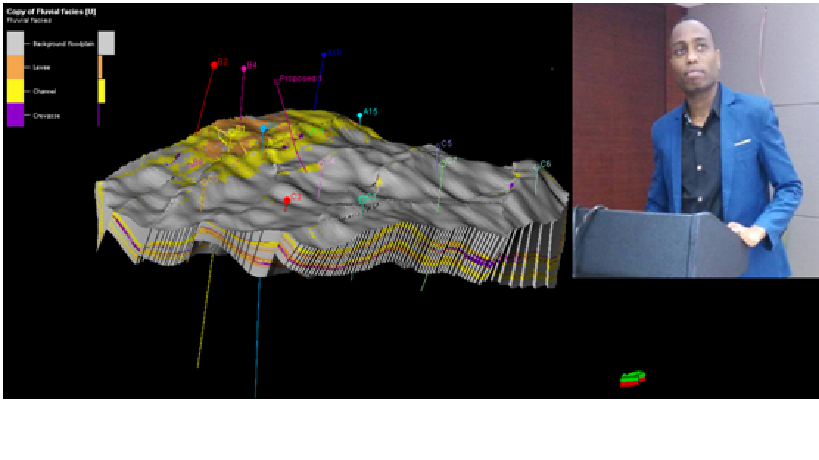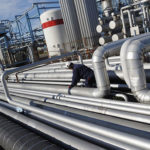Why It’s Important For Oil Companies To Do Reservoir Modelling and Simulation Part 3
RENATUS MAHUYU
Msc Oil and NaturalGas Engineering
China UNIVERSITY OF GEOSCIENCES-WUHAN CHINA.
Phone number /WhatsApp: +8613006172786
www.renatusmahuyu.blogspot.com
This article addresses the following topics
- How a reservoir model is constructed
- Why we carry out reservoirmodelling and simulation
How a reservoir model is Constructed
Different data such as 3D/4D seismic data, well logging data, structure map, well data, core analysis data, are gathered by different oil companies during exploration to production time and all this data are combined together to create a static 3D MODEL to get a deep understanding of the reservoir structure.
READ:why-its-important-for-oil-companies-to-do-reservoir-modeling-and-simulation-part1
A 3D static model is then converted to a 3D dynamic model to allow fluid flow in a porous medium for simulation purpose to predict future behavior of the reservoir.
Seismic to simulation
Constructing a reservoir models is done from seismic to simulation. the model should accurately reflect seismic data, well data, well log data and production data.
Key techniques used in the process include integrated petrophysics and rock physics to determine the range of lithotypes and rock properties,
READ ALSO: Why-its-important-for-oil-companies-to-do-reservoir-modelling-and-simulation-part-2
Whyreservoir modelling and simulation
Petroleum experts need to know how the formation (rocks) are rearranged so as to be able to know where to drill a well for production or injection for the purpose of monitoring and managing production.
Hence Reservoir Engineers uses Simulationsbecause: Itis an experimental tool that allows conduction of many experimental test without exposure to risk, it allows assumptions by imitation of the few real worlds factors. We use simulation if the real system being designed does not exist or its very hard to engage.
As we have seen in the exploration stage most exploration companies invest a lot of funds just to find oil and gas.
We use reservoir modelling and simulation because for the informationobtained from a newly discovered field are very few compared to the fieldsize.
So, the information obtained from the drilled well, seismic data, and logging of the few drilled wells has to be integrated accurately in order to construct a global picture of the reservoir.
A reservoir simulation model built with this few information, will be improved with time as field development proceeds since more information will be obtained as the field is developed. Such information will continue to improve the model’s accuracy by carrying out processes like historical matching.
Once a model is accurate enough, A reservoir Engineer will be able to run different numerical simulation scenarios to optimize the reservoir performance, field plan and reservoir management
In summary, Uses/Advantages of doing modelling and simulation
- It helps to point out a best location to place a well to avoid risk of drilling well randomly,
so, a reserve model is built and run to give assumption of the area where is best to drill a Well, this is done through algorithmic methods called Stochastic method and Deterministic methods (which will be discussed later on another article to come)
- Reservoir modelling and simulation helps to forecast production, which helps a company to know life time of a reservoir, plan time for secondary or tertiary recovery method only if the remained oil/gas is economical.
- Its helps to know and calculate the remained oil or gas in place, this will also give a company a power to decide on how to manage production. So, without reservoir simulation, it is easy for the oil company to abandon a reservoir without knowing if there is still economical oil or gas left in the reservoir.
- Reservoir simulation and modelling makes it simple to calculate the economic viability of oil/gas reserves by forecasting the cumulative oil or gas recovery processes over time and calculating it with the NPV of oil/Gas at a particular time.
Reservoir modelling and simulation studies turned out to be a powerful tool whichacts as alaboratory designed for the purpose of conducting different experiment tests on different scenarios set by a reservoir engineer.
From theseconclusive definitions and explanations, we see the essence of reservoir models and simulators to oil companies.
Reservoir modelling and simulation answers all of the below questions.
How do they know if discovered oil/gas is economical or not?
How much is it there?
For how long will it be produced?
How sure are oil companies on where to drill in a field?
How do the oil companies reduce risk from guessing where to drill?
How to Forecast oil/gas price?
It is therefore an essential tool for oil companies for reservoir management.
Thank you
For further enquire, questions and suggestion please feel free to contact me through provided contacts and on my blog page www.renatusmahuyu.blogspot.com
=================================END===============================



